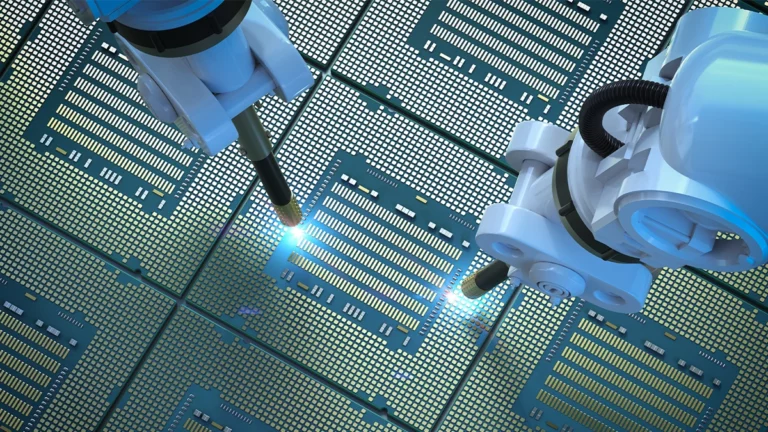Over the past 20 years, modern technology trends has accelerated change at an incredible rate and scale in 2022. We have created a world in which knowledge can travel to all parts of the planet quickly and at almost no expense. This enables communication and cooperation at a size that was previously thought of as science fiction.
We have created tools that allow us to take on tasks like battling coronaviruses and populating Mars. mRNA vaccines and reusable space rockets. Even though these changes are amazing, five fundamental technologies will likely lead us closer to the kind of world that is often depicted in movies.
Artificial Intelligence (AI):
A machine’s capacity to learn and act effectively is referred to as artificial intelligence, or AI, and machine learning. This means that machines are able to make choices, perform duties, and even the future predictions based on what they learn from data.
You might be surprised to discover how much more of a part AI and machine learning already play in daily life. Every Google search you conduct, Alexa, Siri, Amazon’s product suggestions, Netflix and Spotify’s tailored recommendations, security checks for unauthorised credit card transactions, dating apps, fitness monitors… AI controls each.
AI will change almost all future of contemporary living. Stephen Hawking said, “Success in creating AI would be the biggest event in human history.” And Hawking immediately followed that up with, “Unfortunately, it might also be the last unless we learn how to avoid the risks.”
For society and human existence, as we know it, there are possibly massive risks, especially because some nations are competing with one another to create autonomous weaponry with AI capabilities. Many other future technology are based on the basis of artificial intelligence (AI) and machine learning. We wouldn’t have made the incredible strides in the Internet of Things, virtual reality, chatbots, face recognition, robotics, automation, or self-driving vehicles, to name a few, without AI.
AI will also change how human tasks are done. Automation powered by AI will have a major effect and could result in the loss of many jobs. But don’t subscribe to a futuristic technology of the world in which machines take over all human employment; instead, AI will improve our lives at work. Human labour will be improved by AI, and new jobs will appear to take their place.
On the other hand, entirely new AI-powered apps are in the works. For instance, an AI tool examines students’ biological changes, endocrine changes, and facial reactions in a classroom to spot students’ interest waning and suggest remedies. AI-enabled robots could work in the healthcare industry and contribute actively to diagnosis and therapy. Google’s AlphaGo, a low-cost program that taught itself to play the difficult game of Go, is proof of how quickly AI can pick up skills and outperform even the best players in the world.
Gene Editing Technology:
Biology’s multidisciplinary area of genomics concentrates on deciphering and modifying the DNA and genomes of living things. A collection of technologies known as gene editing makes it possible for genetic engineering to alter the DNA and genetic makeup of living things.
As a result of future technology advancements in biology, it is now possible to change a cell’s DNA, affecting the qualities that its progeny will inherit. This might have an impact on the amount of foliage or the colour, whereas, in people, it might have an impact on things like height, eye colour, or the propensity to get sick. This creates almost infinite possibilities because it implies that any hereditary trait in a living thing could be altered.
The molecular scissors known as CRISPR, which can accurately edit or change a specific DNA code, have shown potential. It was found to break the DNA of viruses that invade our bodies in the bacterial defense system. CRISPR can potentially prevent various hereditary illnesses, including cancer, neurodegenerative diseases, and blood disorders, despite its early development phases. It is currently being used to treat and diagnose coronavirus.
The area of medicine is where genome editing is being used extensively. The correction of DNA mutations, which can result in severe diseases like cancer or heart disease, is one of the most exciting ongoing initiatives. However, there are a lot of ethical, legal, and hypothetical issues when it comes to DNA modification and editing, possibly more so than with any other future technology. Human genome modification is prohibited in many nations, including most prohibited in many nations, including most of Europe, because its long-term effects are unknown.
When something has the potential to change society as much as genomics, it’s simple to get carried away with invention ideas of how it might be possible to remove cancer or even forever extend human life completely.
Extended Reality (XR):
Extended reality, or XR for short, refers to using future technology to produce more realistic digital encounters. It includes virtual reality, augmented reality, and mixed reality.
In actuality, XR is used to better workplace learning, increase customer service, let customers sample products before purchasing, and other key processes.
People can experience the future world in thrilling and brand-new accompanied by increased to XR technologies. The world is already using XR technology in very practical ways, and it will fundamentally alter how we use the future technology. In reality, over $3 billion was made globally in 2018 from mobile-based AR encounters like the Pokemon Go app. As the user interface for the metaverse, or the concept of a virtual world where we can be whoever or whatever we want while engaging in activities like online gaming, socializing, attending events, or other activities akin to those depicted in the movie “Ready Player One,” XR also serves as a portal into this world.
Given that XR headsets can be expensive, large, and cumbersome, accessibility and availability are clear challenges to be surmounted. But as the future technology becomes more accessible, cheap, and pleasurable to use, the likelihood that it will be widely adopted will only rise. The greatest obstacles will be the privacy issues and possible psychological and physical effects of extremely immersive future technology.
Virtually Reality (VR):
Our five senses help us experience the world and learn about our reality; the knowledge provided to them can change how we perceive the world. Through VR, we can enter a universe where our perceptions can be exposed to a perception of reality that isn’t there. Virtual reality has had and will continue to significantly affect various industries, including skill development, surgery, and entertainment. Today, pilots can learn essential skills in low-risk (accident-free), affordable, and environmentally favorable (no carbon emissions from aircraft fuel) ways, thanks to flight simulators.
Patients with post-traumatic stress disorder (PTSD) can be put in a simulation of their stressful event while undergoing virtual reality exposure treatment (VRET), which can aid in developing coping mechanisms. Imagine also that students in isolated regions could visit the Great Barrier Reef and learn about the value of coral reefs, or a surgeon could practice on a patient-specific simulation (a complicated tumor in a difficult-to-reach spot). There are countless options.
Human-Computer Interfaces:
Wearable future technology and human-computer interactions are created to enhance human function physically and possibly mentally and to help us live longer healthier lives. Fitness tracking bands and smartwatches are two of the most widely used wearables on the market. These compact, simple-to-wear gadgets usually record our activity and give us insights into how to live healthier, better, and more efficient lives.
The term “wearable,” however, does not necessarily refer to something you strap to your wrist or another part of your body; it also includes robotic prosthetics, smart running shoes that can analyse your gait and performance, smart clothing like those, as well as wearable robotic future technology used in industrial settings.
The vast variety of wearables will increase as the future technology becomes more compact and intelligent, and new innovation of smarter goods will replace the wearables we are accustomed to today. For instance, smart contact lenses are likely to supplant the smart spectacles that are currently available. After that, smart eye implants are expected to take the position of smart contact lenses.
Many people believe that technological advances like these will ultimately lead to the creation of genuinely augmented humans, transhumant, or “humans 2.0,” whose bodies have been given a sports car makeover in order to achieve improved physical and mental performance. This would revolutionize the medical field and ultimately even put our conception of what it means to be human in danger.
At a societal level, we could be heading toward an even greater divide between rich and poor, between the Haves and the Have Nots. Future technology holds out the possibility of extending our lives and making them healthier, possibly even allowing us to live eternally, but most likely only for those who can afford it. Imagine a society where the wealthy are essentially immortal superhumans, while the rest of the population is average and poor. There is also a more general ethical debate about whether we should desire to live extraordinarily extended lives in light of the enormous strain such a lifestyle would place on our earth.
Conclusion:
Imagine a society where newborns are resistant to chronic illnesses like cancer (gene editing). They have unrestricted access to information and skill development as they enter the educational system from anywhere on the universe (VR). They possess intelligent, AI-powered equipment. While carrying them securely, self-driving vehicles converse with one another to avoid traffic jams, and health-in-a-box services analyse daily spit samples to read their bodies. The bodies are in perfect condition thanks to targeted medication delivery systems and nanobots, which can also use nanotechnology to remove vascular plaque. Their houses are built with self-healing systems. The non-fungible token-powered creative material is used, shared, and traded via blockchain. They can vote from anywhere, transfer money to anyone on the globe with a button, and get paid automatically. Additive manufacturing, also referred to as cult 3D printing, is the process of constructing a 3D item layer by layer from a digital file. gene editing and artificial intelligence may seem like higher-tech advancements, 3D printing has the ability to change manufacturing and other sectors totally.
This new world will need new methodologies and attitudes to keep these future technology from becoming a renegade. As these technologies proliferate, laws and ethical standards must be implemented as checks and balances.
Let’s deliberately work to combine people and future technology in order to not only surmount development and disease-related problems but also to make the world a better and more just place. Together, we can effectively develop these tools for the benefit of society through the future technology. It is going our future.
To get more tech updates, click here.

















